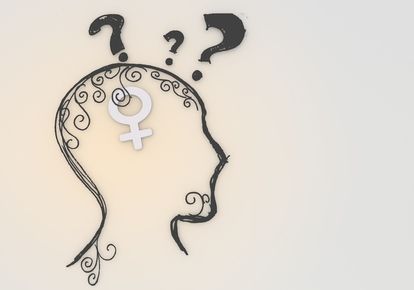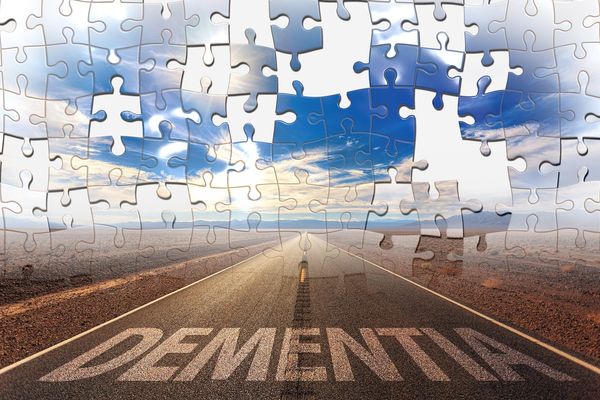Vascular Dementia Symptoms: Causes and Treatment
Explore the complexities of vascular dementia, including its causes, symptoms, and management strategies. Learn about its relationship with Alzheimer's, the importance of blood flow and vessel health, and the crucial role of managing risk factors in preventing

Learn about the different types of vascular dementia, including multi-infarct dementia and Binswanger’s disease, and their symptoms such as memory loss, difficulty with daily tasks, and psychomotor slowness. Alzheimer's disease, the most common dementia diagnosis, can have overlapping symptoms with vascular dementia, particularly in memory loss.
What is Vascular Cognitive Impairment?
Blood vessels damaged by cholesterol accumulation or stroke often cause vascular dementia symptoms due to restricted blood flow to the brain. Conditions that affect blood vessels can lead to vascular dementia symptoms by impairing the brain's ability to process and store information. Blood contains oxygen and nutrients that are essential to brain cell health and normal brain functioning; without it, we quickly lose the ability to think, speak, remember and accurately process external stimuli. People suffering from vascular dementia also experience degraded motor skills and may find it increasingly difficult to use their hands and walk.
The most common causes of vascular dementia are:
- Small strokes occurring over time (also called multi-infarct dementia)
- Hypertension that is not properly controlled
- Arrhythmias (abnormal heart rhythms)
- Atherosclerosis
- Binswanger’s disease (subcortical dementia)
- Systemic lupus
Brain vascular disease is closely associated with vascular dementia, emphasizing the impact of impaired blood flow in the brain.
According to the article “Subcortical dementia” written by Dr. Mark Turner et al and published in a 2002 edition of the British Journal of Psychiatry, subcortical dementia exhibits lesions similar to Alzheimer’s but affecting different areas of the brain, specifically the cerebellum, basal ganglia and the brainstem. The vascular dementia symptoms presented in subcortical dementias tend to emphasize personality and behavioral changes (especially irritability, depression and apathy) rather than to disruptions of memory and attention, which are frequently observed in Alzheimer’s disease.
Damage to the heart and blood vessels can lead to reduced blood flow to the brain, contributing to cognitive impairments.
High blood pressure is a significant risk factor for vascular dementia. Risk factors for heart disease often overlap with those for vascular dementia, indicating a significant link between cardiovascular health and cognitive function.

Causes and Risks
Vascular dementia is primarily caused by conditions that damage blood vessels in the brain, leading to interrupted blood flow and oxygen supply. When blood vessels are damaged, the brain cells they supply can become deprived of essential nutrients and oxygen, resulting in cognitive impairment. One of the most significant risk factors for developing vascular dementia is having a stroke. The likelihood of developing vascular dementia after a stroke depends on the size, number, and location of the strokes.
Other conditions that impede blood flow to the brain can also contribute to vascular dementia. High blood pressure, or hypertension, is a major risk factor as it can cause chronic damage to blood vessels. Similarly, problems with the heart’s rhythm, such as arrhythmias, can affect blood flow to the brain. Diabetes and high cholesterol levels are also significant risk factors, as they can lead to atherosclerosis, where arteries become clogged and restrict blood flow.
Managing these risk factors is crucial in lowering the chances of developing vascular dementia. Regular monitoring and control of blood pressure, maintaining healthy cholesterol levels, managing diabetes, and adopting a heart-healthy lifestyle can all contribute to reducing the risk of cognitive impairment and dementia.
Subcortical Vascular Dementia vs Cortical Dementia
Individuals with Huntington’s and Parkinson’s disease often suffer from subcortical dementia, with nearly half of patients experiencing psychotic illness, hallucinations and mania. This is due to the affected areas being associated with producing symptoms defining schizophrenia, Tourette’s, addictive behavior and obsessive-compulsive disorder.
Binswanger’s disease was once thought to be a rare disorder but is not receiving a second look by researchers who think it may actually be a form of subcortical vascular dementia. Damage occurs when white brain matter is affected by blood loss because of atherosclerosis. “White matter” is another term for the brain and its primary composition of myelinated axons and glial cells. Although the brain is naturally pinkish-white in color, it turns mostly white when preserved in formaldehyde. Conditions that damage blood vessels in the brain can lead to the development of vascular dementia.

Symptoms of this type of vascular dementia involve executive cognitive functioning, specifically mood, behavior, short-term memory, attention, organization and decision-making. A key trait of people suffering from Binswanger’s is psychomotor slowness. Writing, turning doorknobs, grasping items and general clumsiness are all hallmark features of dementia types related to subcortical dementia and Binswanger’s disease.
Symptoms of Vascular Dementia
Symptoms of vascular dementia can vary widely and may appear suddenly or progress gradually over time. The symptoms often depend on the size, location, and number of damaged areas in the brain. Common symptoms of vascular dementia include:
- Memory Loss: Difficulty remembering recent events or information.
- Difficulty with Problem-Solving and Decision-Making: Struggling to plan, organize, or make decisions.
- Difficulty with Communication and Language: Trouble finding the right words or following conversations.
- Mood Changes: Experiencing depression, apathy, or irritability.
- Personality Changes: Noticeable changes in behavior or personality.
- Difficulty with Daily Activities: Challenges in performing everyday tasks such as cooking, cleaning, or managing finances.
These symptoms can significantly impact a person’s ability to function independently and may worsen over time. Recognizing these signs early can help in seeking appropriate medical intervention and support.
Vascular Dementia Symptoms with Multi-infarct Dementia
These symptoms represent classic signs of dementia that include:
- Loss of memory, especially working and short term memory
- Inability to learn or remember how to do everyday tasks
- Loss of focus, attention and planning skills
- Forgetting names, words and faces
- Reduced range of motion
Doctors diagnose vascular dementia by using memory tests, brain imaging, and assessing medical history.
Specifically, an “infarct” occurs when any area of the body experiences reduced blood flow and irreversible damage. When an infarct happens within the brain, it is medically referred to as a “stroke”. When a person suffers a stroke on the left side of the brain, he or she will develop problems with language and memory. However, strokes affecting either side of the brain can impair coordination and recognition skills. Diagnosing vascular dementia early is crucial to manage risk factors and prevent further cognitive decline.
This video explains how to prevent vascular dementia
Diagnosing Vascular Dementia
Diagnosing vascular dementia involves a comprehensive evaluation by a healthcare professional. The process typically starts with a detailed medical history and an assessment of symptoms. A doctor may ask about difficulties with daily activities and conduct memory or cognitive tests to evaluate thinking skills.
In addition to cognitive assessments, the doctor may speak with someone who knows the patient well to gather more information about changes in behavior and daily functioning. Brain imaging tests, such as MRI or CT scans, are often used to identify any strokes or other abnormalities in the brain that could be causing the symptoms.
Other diagnostic tools may include blood tests to check for conditions that could affect brain health, such as high cholesterol or diabetes. By combining these various assessments, doctors can determine whether vascular dementia is the cause of the symptoms and develop an appropriate treatment plan.
Transient Ischemic Attacks and Vascular Dementia
Temporary vascular dementia symptoms can happen when medical conditions such as atherosclerosis, diabetes, or hypertension create an embolism in a brain artery. Cigarette smoking, migraines, excessive alcohol consumption having a family history of TIAs or strokes increases the risk of someone suffering a TIA. Signs that you may be experiencing a TIA include numbness and/or paralysis of one side of the body, sudden migrain, blurry vision, impaired cognition and severe dizziness.
Receiving treatment as soon as possible can prevent irreparable damage caused by transient ischemic attacks. Administration of thrombolytic (“clot-busting”) drugs such as Retavase and Activase within one to two hours of the attack can dissolve clots and reduce the severity of the damage, if any. Clinical trials aimed at testing methods to treat vascular dementia are crucial for improving our understanding and developing effective treatments.
Testing for Vascular Dementia
Once vascular dementia symptoms are observable and having a negative affect on someone’s quality of life, doctors will perform a series of tests to determine if a stroke has occurred or another condition exists. A diagnosis of vascular dementia requires:
- Complete blood testing–includes cholesterol, thyroid, vitamin deficiencies and diabetes
- Electrocardiograph readings
- Motor skills testing
- MRI and/or CT scans
- Psychological assessment
Experts often use the term 'vascular cognitive impairment' to describe a spectrum of thinking changes that can vary in severity.
Understanding what is vascular dementia in contrast to Alzheimer’s disease can help family members who are coping with a loved one suffering from vascular dementia symptoms develop the best treatment plan possible. Because it is damage to blood vessels rather than damage to brain cells that is causing the dementia, Alzheimer’s medications are not applicable to relieving vascular dementia.
Instead, a treatment plan consisting of blood pressure regulation, reducing cholesterol levels by eating healthy foods and exercising, taking aspirin daily if prescribed and addressing psychological symptoms with appropriate medication are the best ways to alleviate vascular dementia symptoms. Developing a person centered care profile is recommended.
Treatment and Management
While there are no treatments available to reverse brain damage caused by strokes, the focus of treatment for vascular dementia is on preventing future strokes and managing symptoms. Medications that prevent strokes, such as blood thinners, can help reduce the risk of further brain damage. Additionally, medications used to treat symptoms of Alzheimer’s disease, such as cholinesterase inhibitors, may benefit individuals with early-stage vascular dementia.
Managing risk factors is also a critical component of treatment. This includes controlling high blood pressure through medications and lifestyle changes, such as a healthy diet and regular exercise. Lowering cholesterol levels and managing diabetes are also important to prevent further damage to blood vessels.
A comprehensive treatment plan may also involve addressing psychological symptoms with appropriate medications and providing support for daily activities. By focusing on these areas, it is possible to improve the quality of life for individuals with vascular dementia and slow the progression of the disease.
Our Resources section can help you find the information and tools that you need. We have courses, videos, checklists, guidebooks, cheat sheets, how-to guides and more.
You can get started by clicking on the link below. We know that taking care of a loved one is hard work, but with our help you can get the support that you need.
Click here to go to Resources Section now!



